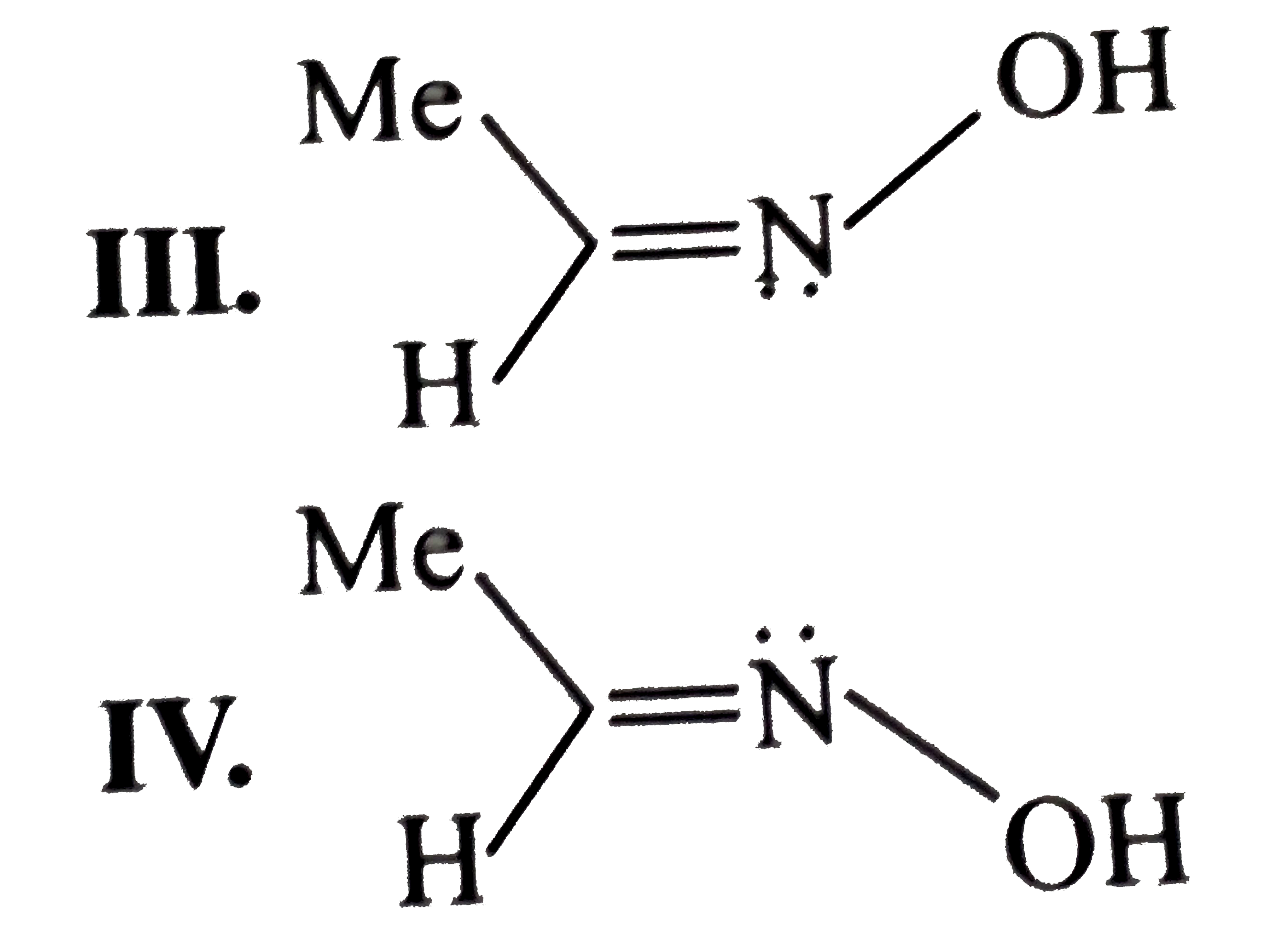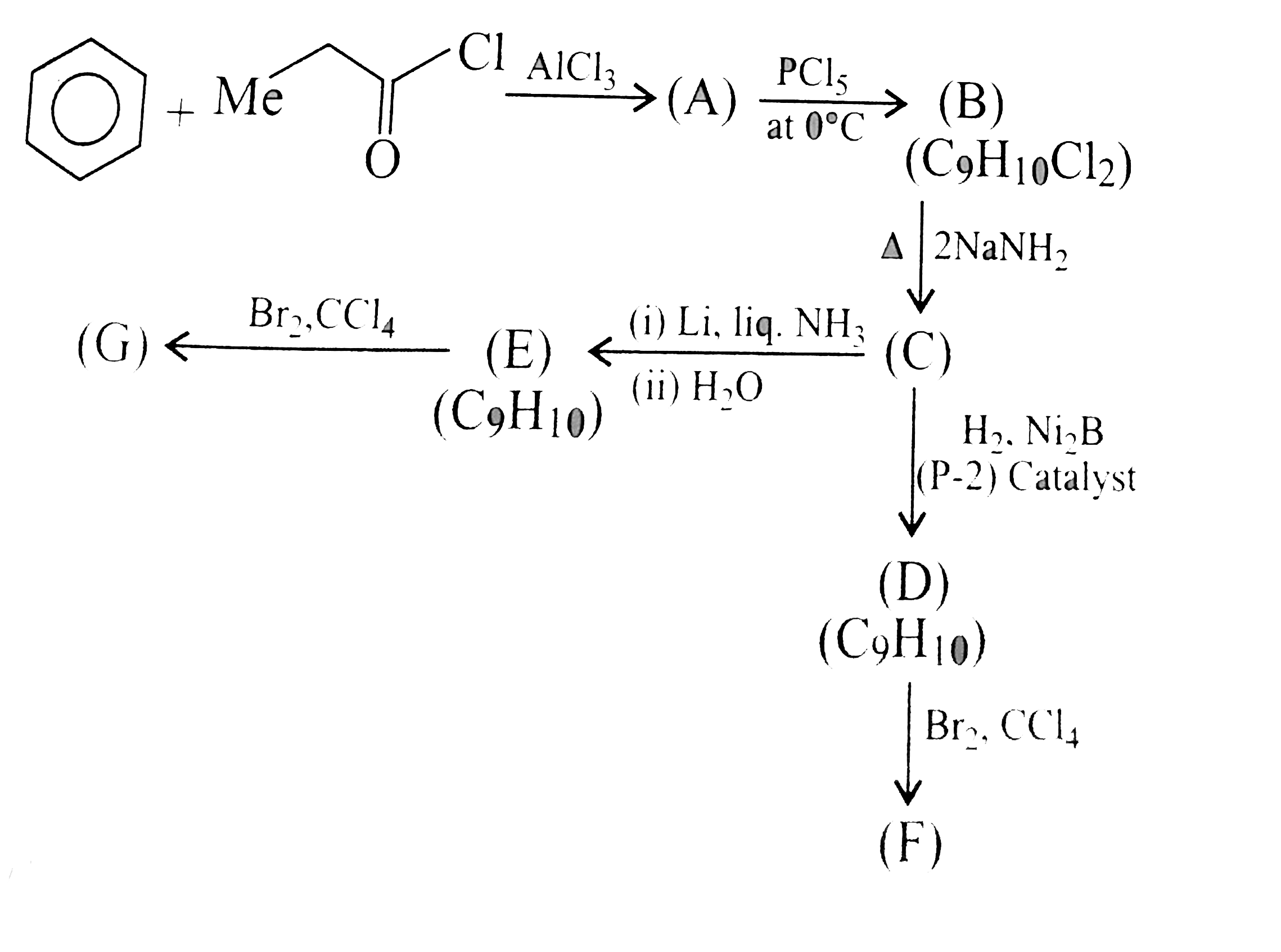Aldehyde with NH2NH2 forms
Hydrazone
Aniline
Nitrobenzene
none of these
The correct Answer is:A
To solve the question regarding the reaction of an aldehyde with hydrazine (NH2NH2), we can follow these steps:
1. Identify the Reactants:
The reactants in this reaction are an aldehyde (general formula RCHO) and hydrazine (NH2NH2).
2. Understand the Reaction:
When an aldehyde reacts with hydrazine, it undergoes a condensation reaction. In this reaction, the carbonyl group (C=O) of the aldehyde reacts with the hydrazine.
3. Mechanism of Reaction:
- The nitrogen atom in hydrazine has a lone pair of electrons, which can attack the electrophilic carbon atom of the carbonyl group in the aldehyde.
- This results in the formation of a tetrahedral intermediate where the oxygen atom of the carbonyl group becomes negatively charged.
4. Formation of Hydrazone:
- The negatively charged oxygen can then protonate (lose a hydrogen ion) and water (H2O) is eliminated from the intermediate.
- The remaining structure forms a double bond between the carbon and the nitrogen, resulting in the formation of a hydrazone (RCH=N-NH2).
5. Final Product:
The final product of the reaction is a hydrazone, which is characterized by the presence of a C=N bond.
Conclusion:
The reaction of an aldehyde with hydrazine results in the formation of a hydrazone.
The reactants in this reaction are an aldehyde (general formula RCHO) and hydrazine (NH2NH2).
When an aldehyde reacts with hydrazine, it undergoes a condensation reaction. In this reaction, the carbonyl group (C=O) of the aldehyde reacts with the hydrazine.
- The nitrogen atom in hydrazine has a lone pair of electrons, which can attack the electrophilic carbon atom of the carbonyl group in the aldehyde.
- This results in the formation of a tetrahedral intermediate where the oxygen atom of the carbonyl group becomes negatively charged.
- The negatively charged oxygen can then protonate (lose a hydrogen ion) and water (H2O) is eliminated from the intermediate.
- The remaining structure forms a double bond between the carbon and the nitrogen, resulting in the formation of a hydrazone (RCH=N-NH2).
The final product of the reaction is a hydrazone, which is characterized by the presence of a C=N bond.
The reaction of an aldehyde with hydrazine results in the formation of a hydrazone.
Similar Questions
Knowledge Check
Which of the following form Schiff's base with CH3−NH2?
AH3C−O∣∣C−HBH5C6−O∣∣C−HCCH3−CH2−OHDH−O∣∣C−OH
N2+3H2→NH3
View SolutionN2+3H2→NH3
View SolutionThe smallest aldehyde and its next homologue are treated with NH2OH to form oxime. Find out the correct answer out of the following.
View SolutionAldehydes and Ketones react with NH2OH to form aldoximes and Ketoximes respectively. Configuration of these can be determined by Beckmann rearragement as that group migrates which is anti w.r.t -OH

Which step is Rate determening step ?
View Solution10mlN2 is reacted with 20 ml H2 to form NH3. The correct statements is /are
View SolutionWhich of the following is formed when As2S3 is warmed with NH4OHandH2O2 ?
View SolutionAldehyde (A) NH2OH.HCl−−−−−−−−→ (B) H⊕−−→MeNH2+HCOOH
Aldehyde (A) and compound (B), respectively are:
Aldehyde (A)
I. MeCHO II. HCHO
Compound (B)
III.
View Solution
